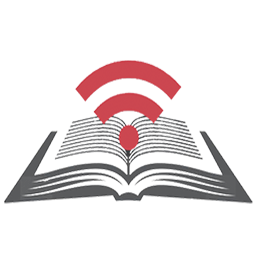Course Tutors
The course focuses on the use of technology in teaching and learning, with particular emphasis on the digital tools and methods of application that can contribute positively to the school and social inclusion of students with disabilities and/or special learning difficulties.
Upon successful completion of the course, students will be able to:
- Formulate arguments in favor of using technology in education
- Identify the general categories of technological resources (hardware and software) that can be utilized in education
- Identify the different types of assistive technologies and the ways in which they benefit students with disabilities and/or special learning difficulties
- Provide examples of technological innovations that support special education
- Search for and locate digital educational resources and learning objects for special education
- Identify indicative educational materials and software available for each category of students’ special educational needs
- Describe the technologies used to address dyslexia
- Discuss how mixed reality applications can support deaf students
- Describe what social robots are and how they can be utilized in inclusive education and special education
- Discuss applications of affective computing and wearable devices in the field of special education
- Develop learning activities that utilize: (a) modern technological tools (educational software, general-purpose and specialized software tools, multimedia/hypermedia tools), (b) Internet and World Wide Web services, tools, and applications, and (c) assistive technologies
- Design a teaching intervention in their subject area in the form of a comprehensive educational scenario that makes adequate and appropriate use of modern digital technologies, while also giving special consideration to students with disabilities and/or special learning difficulties
General Competences
The course aims to develop:
- Searching, analyzing, and synthesizing data and information using the necessary technologies
- Adaptation to new situations
- Independent work
- Teamwork
- Project design
- Work in an interdisciplinary environment
COURSE CONTENT
The course includes the following lecture units:
LECTURES
- Digital technologies and their use in teaching and learning
- Classification and description of modern digital technologies utilized in education and the methods of their integration into teaching and learning
- Software tools, Educational Software, Digital educational resources and learning objects on the Internet – Digital repositories
- Use and design of learning activities and educational scenarios
- Learning activities, educational scenarios, worksheets
- Searching for educational scenarios on the Internet – Repositories
- Design of activities and educational scenarios, with emphasis on inquiry-based learning scenarios
- Information and Communication Technologies & Special Education
- Basic definitions and possible levels of student differentiation. Reference to inclusion in education and the difficulties/challenges faced by current educational systems. Presentation of the model of inclusive education and differentiated instruction.
- Analysis of the most common cases of learning difficulties in combination with classroom requirements, supported by updated statistical data.
- Definitions of educational technology and assistive technology. Presentation of indicative assistive technologies and their benefits for students.
- Real-life examples of technological innovations for supporting special education (e.g., game-based learning for children with autism).
- Educational software and online environments for Special Education
- Ways of searching for educational software and related online environments for Special Education.
- Overview of existing educational materials and software for teaching and educating students with disabilities and/or special educational needs. The overview is categorized by type of special educational need (e.g., hearing impairments, motor impairments) and educational level.
- Indicative use of Special Education software.
- Reading technologies for students with Dyslexia
- What dyslexia in reading is
- Traditional methods of addressing dyslexia
- Technologies used to address dyslexia
- Results of technologies on text reading and content comprehension
- Mixed reality applications for supporting deaf students
- What physical and digital objects are
- How a hyper-world can be created by mixing digital and real-world objects
- Challenges faced by deaf students in the learning process
- Mixed reality applications to support deaf students
- Social robots and their use in Inclusive and Special Education
- State-of-the-Art:
- Social Robots: KASPAR, PROBO, NAO
- Softbank Humanoids (NAO, PEPPER) – technical characteristics
- Software (https://developer.softbankrobotics.com, Aldebaran application store, ERM Robotics AskNAO blockly, Atoy Nao Controller, Choregraphe)
- Impact (Disorder diagnosis, Behavior of children with ASD, Socio-emotional interaction, Social & communication skills, Language development, Attention, Imitation, Eye contact)
- Case Study: Design & Implementation of an Educational Intervention for NAO (virtual/real) using Choregraphe
- Variables, Data Collection, Methodology
- Design: Choregraphe environment & capabilities
- Implementation of Educational Activities
- Application & Evaluation
- State-of-the-Art:
- Affective Computing and Wearable Devices in the field of Special Education
- Background:
- Theories of emotions and affect: Models, Ontologies, Neurological background, Primary–Secondary emotions, Measurement–Dimensions of emotion
- Emotion/Affect Detection & Recognition: Self-report verbal or visual tools, Physiological signal detection (EEG, EMG, EDA/SC, EKG/ECG, pupillometry, etc.), wearable systems, motor-behavioral activity (facial expressions, voice intonation, body posture), text analysis (sentiment analysis)
- Affective Feedback: Virtual agents, dialogue systems (chatbots) and recommendation mechanisms, information visualization
- Case Study: Design of an educational intervention for inclusive schooling.
- Background:

